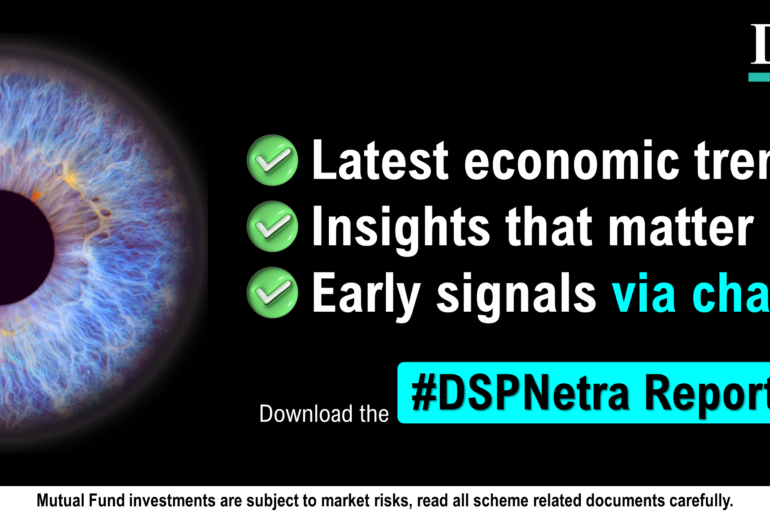Last Updated on Jan 11, 2024 by Harshit Singh
Thematic funds have been gaining immense popularity over the last few years. As per AMFI data, in November 2023, sectoral and thematic funds made for 12% of the total AUM in equity funds; compared to just 8% pre-pandemic.
It’s not just in India that thematic funds have been in vogue. According to data collated by Morningstar, the share of thematic funds globally has tripled as a percentage of all equity funds in the past decade.
In fact, in Europe, thematic funds constitute more than 50% of the total equity assets under management. This makes India, despite the fact that AUM for thematic funds has grown 3.7x in the last 4 years (versus 2.6x for equity funds) look childlike.
What’s behind the popularity of thematic funds? More importantly, should you be hopping on to this bandwagon? And if yes, how?
Table of Contents
Why Are Thematic Funds so Popular?
- Stories Sell More than Numbers
Let’s face it. Investing can be intimidating. And expert investors make things sound more complicated than they actually are. Contrary to that, thematic investing can be very easy to understand, offering the opportunity for investors to rationalise their decisions by themselves.
From the current viewpoint, investing in clean energy is a no-brainer. So is investing in electric vehicles, artificial intelligence, urbanisation, nutrition, and so many other
‘themes’ that are rather intuitive to the public eye.
The shift away from ‘star fund managers’ has already been seen across the world through ETFs, and thematic investing might only amplify that as decision making becomes more macro-driven and democratised.
- More Supply to Meet More Demand
With the approach succeeding globally, and picking up immensely in India, the mutual fund industry has more products to offer. As of November 2023, there are 145 sectoral and thematic schemes to choose from, compared to just 97 in November 2019.
Additionally, the current Indian government has mastered the art of strategising and narrating. Thanks to fiscal policy, every Indian knows about the progress and potential in infrastructure, defence and manufacturing.
Investing in these, at your own discretion, seems to be a step with fewer entry barriers than choosing from 40+ fund house, and 10+ categories of funds, throwing out thousands of permutations and combinations.
- It’s Easier When the Markets Are Up
Sectoral and thematic funds are more concentrated than a broad-based index. The relative lack of diversification results in higher volatility, and inconsistency in returns, which are how investors define risk.
However, psychologically, one tends to take on higher amounts of risk when the markets are doing well. Despite its biases, that trend has proven itself right; most often in the form of higher inflows when the markets are going up, and higher outflows during downturns.
The same has been seen of sectoral and thematic funds too. Over the last year,
whenever the inflow into equity funds was lower than average, only 8% of the inflow
would go towards sectoral and thematic funds. However, when the equity fund inflow is greater than average, a whopping 20% gets channelled towards thematic investing.
Does Thematic Investing Work?
While India is relatively new to thematic investing, the concept has been popular since the 1950s. According to Morningstar, the first thematic fund started in 1948 by Chicago- based Television Shares Management.
The Television Fund was made to benefit from the rise of the television industry at a point when there were only 1 million TV sets in the US. Given the long history of thematic funds in the rest of the world, there are some interesting insights to be drawn over time.
- Themes Are Subject to Change
Themes, inherently are based on the idea of change. And the last thing to change is, is permanent. Themes often evolve, and so do funds.
In fact, The Television Fund became the Television Electronics Fund shortly after its launch, broadening the scope of investment. And after two decades, when it was acquired by Kemper, it became the Kemper Technology Fund, which was further away from the original idea.
- Thematic Investing has a Growth Bias
The Morningstar research on thematic investing also highlighted how themes spring forth from growth narratives. 72% of thematic funds had a growth bias, while just 6% had a value tilt.
In India, the most popular theme over the last year has been PSUs. Remember PM
Narendra Modi’s statement in parliament about investing in government run companies, and how PSUs did exceedingly well after? That!
- Themes Are Slaves of Time
Since the last 3 years, more than 50% of the funds in Morningstar’s global universe have not just survived, but also outperformed the Morningstar Global Markets Index.
However, the success rate dropped to just 1 in 10, over a 15-yr period. More than 75% of thematic funds that were available to investors at the onset of that period have since been closed, said the report.
How to Invest in Thematic Funds?
While the frenzy is on and returns are healthy, it is easy to overlook on the perils of
investing in thematic funds. But just following some basic steps can add prudence to the entire process and avoid some rookie mistakes.
- Differentiate Between Sectoral Funds and Thematic Funds
There is a line of distinction between a sector and a theme. While automobiles is a sector, the shift from combustion engines to electrical engines is a theme.
It’s important to make this distinction since a sector can be cyclical, but a theme usually has a fair amount of structural support.
Over the last 10 years, while the banking index has been the best performing sector just once in 2014, themes like the rise of private banking or digital banking or even NBFCs would have been more consistent in generating high returns.
- Don’t Forget to Diversify
Thematic funds do invest in multiple companies, but at the end of it can’t do away with market risk. They are at the end of the day, concentrated when it comes to the investment idea.
European investors seem to have nailed this. A majority of Europe’s thematic investments are channelled towards broad thematic investing. These are funds which invest in a range of themes as and when they see fit.
At Rupeeting, we follow a similar approach. Take the Value Migration smallcase for example. It invests in themes with structural tailwinds emerging out of value-shifts. It has a mix of themes like energy efficiency through ethanol blending, luxury real estate, renewable energy, indigenisation of defence manufacturing, etc.
- Do Your Research
While thinking through themes, it is also important to learn from the evolution of thematic investing from developed countries.
A few checks to ensure can include the reputation of the AMC, fund managers’ experience, the AMCs history in thematic investing, changes in AUM, diversification within the fund, changes in the fund’s objectives, constituents and adherence to the theme. Tickertape can be particularly useful in doing your own research.
Additionally, ensure you’re investing when the theme is fairly nascent, and exiting while it’s fairly mature.
Thematic investing’s nascency in India can be taken advantage of, but the developed world’s maturity is something to learn from!
- Everyone’s Investing in Thematic Funds. Should You, Too? - Jan 11, 2024
- Cyclical Stocks – A Year of Opportunity? - Apr 18, 2023
- ESG Investing in the Indian Market - Mar 20, 2023



